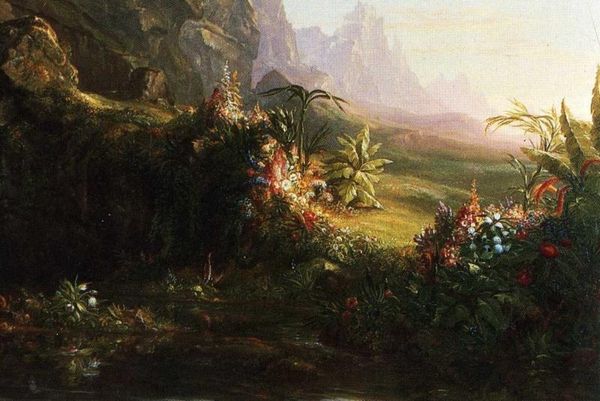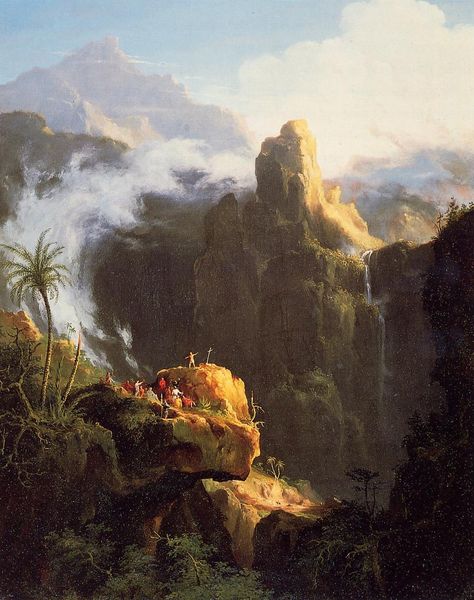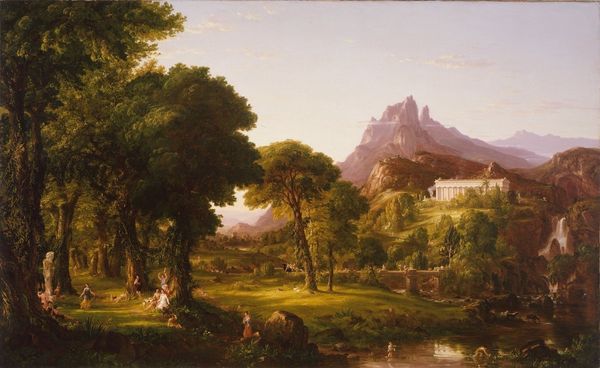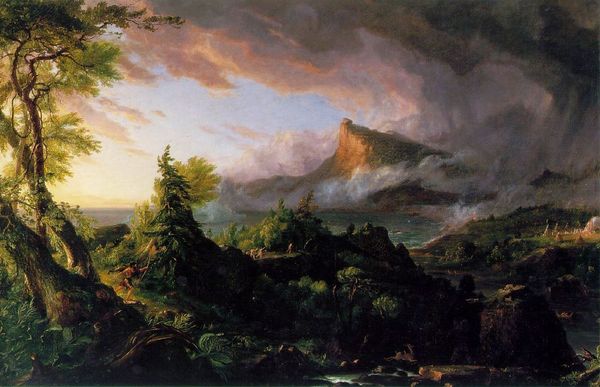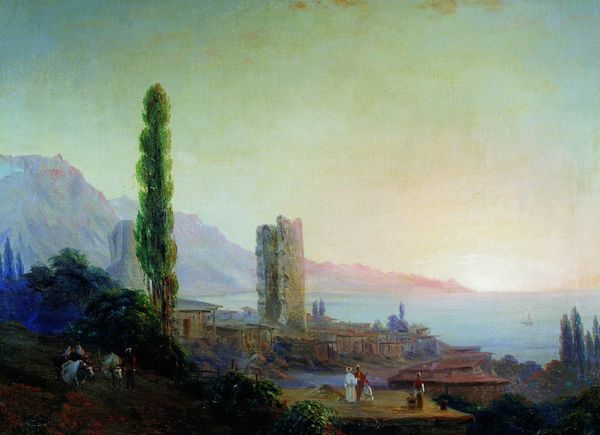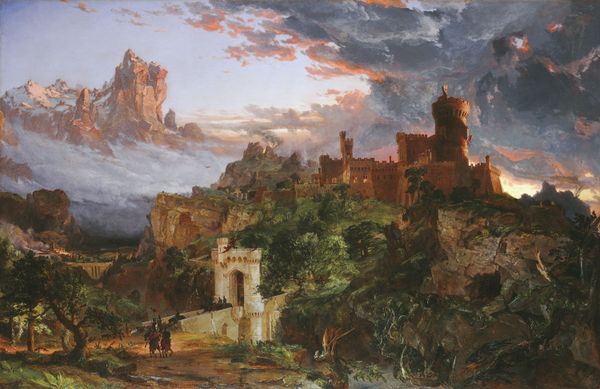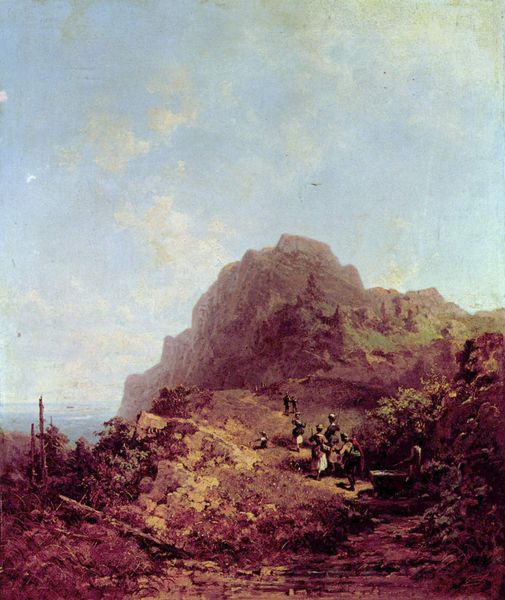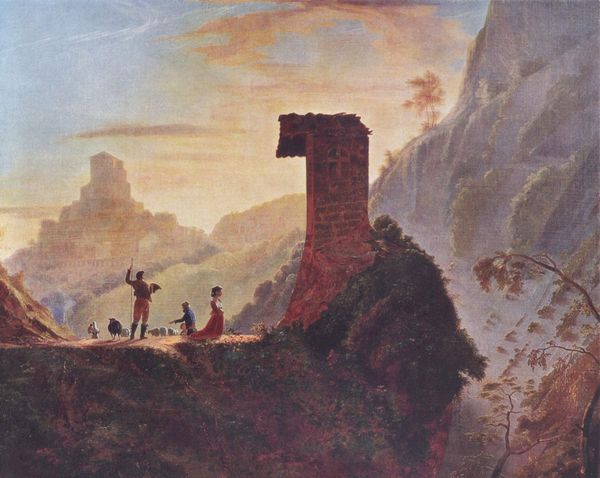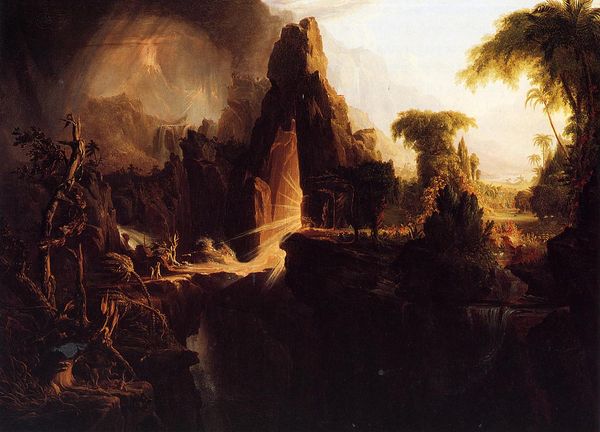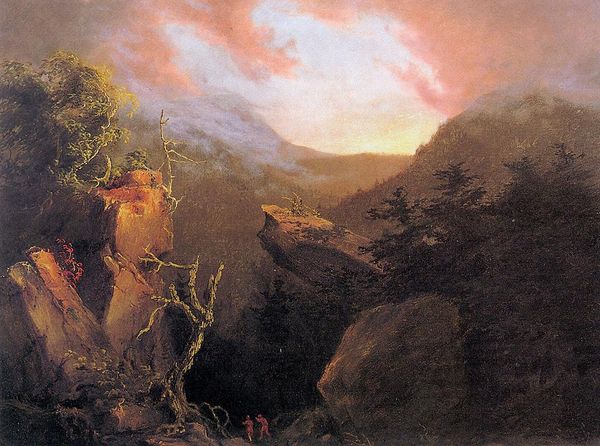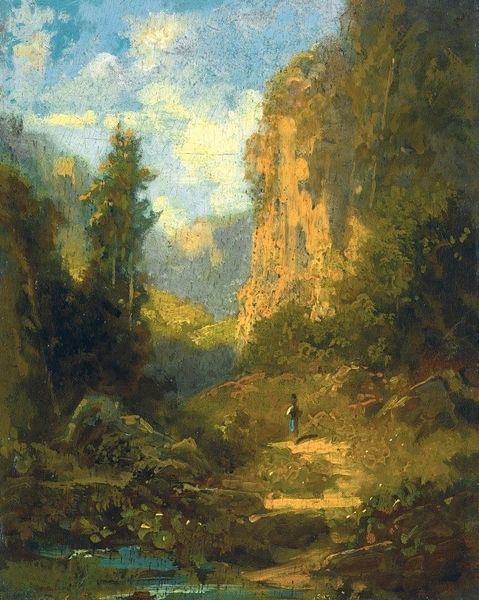
painting, oil-paint
#
tree
#
sky
#
painting
#
oil-paint
#
landscape
#
oil painting
#
forest
#
romanticism
#
mountain
#
hudson-river-school
#
nature
Copyright: Public domain
Curator: What strikes me immediately about this image is its vibrant density. The teeming foliage feels so alive! Editor: I’d say this detail, titled "Childhood," is part of Thomas Cole’s series, "The Voyage of Life," which explores stages of human existence. Painted during the height of the Hudson River School movement, these pieces grapple with themes of nature, religion, and the passage of time within a uniquely American landscape. Curator: I'm intrigued by Cole's rendering of material reality here. The oil paint practically breathes with detail—note how each leaf is lovingly rendered and how textures build such depth across the canvas. What sort of relationship was he intending to foster between raw experience, materiality, and national identity by constructing this landscape so vividly? Editor: Absolutely! It's a loaded landscape meant to project ideals. This particular scene showcases the hopeful innocence of youth, set against a backdrop of untamed wilderness, a space that 19th-century American audiences associated with divine promise and the idea of manifest destiny. Museums at the time frequently displayed paintings like these to cultivate civic values, often by positioning these works as both reflections of the world and models for proper moral sentiment. Curator: And this positioning affected not only art consumption, but also how and why paintings like this were produced, right? Do you see it as celebratory of craft traditions? It seems far from a deconstruction of classist divides. Editor: No, Cole very clearly occupied the upper echelons of society and made paintings, rather than, say, quilts. Instead, I argue he was more invested in crafting and spreading social ideologies. But the reception…that’s another question, right? Consider what groups in the viewing public might have felt excluded by the promises held within this picture. How were they represented, or not represented at all, within its visual rhetoric? Curator: Such pointed absences raise important considerations! It makes the materiality of what *is* here seem less romantic, and more intentional. Editor: Indeed, a picture never speaks for itself; we must always consider who benefits from its particular narrative and modes of visual address.
Comments
No comments
Be the first to comment and join the conversation on the ultimate creative platform.
